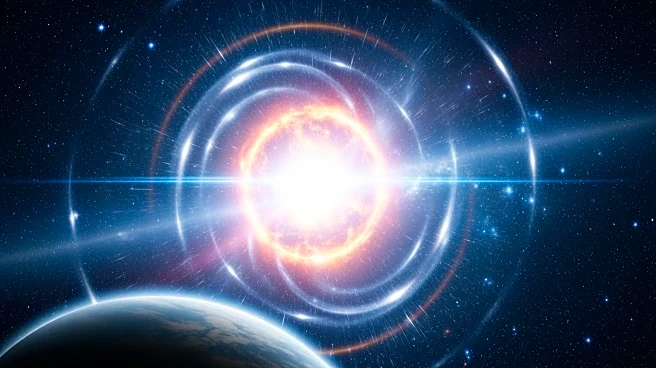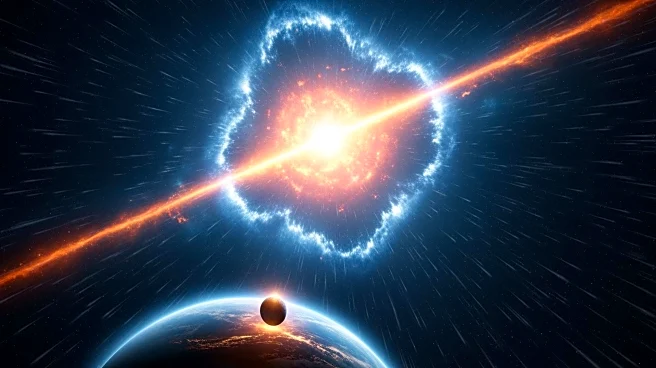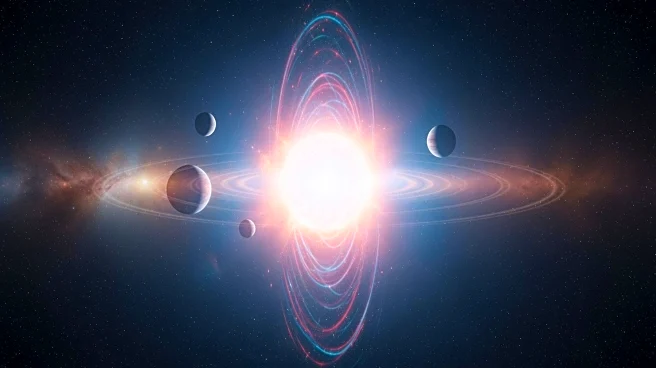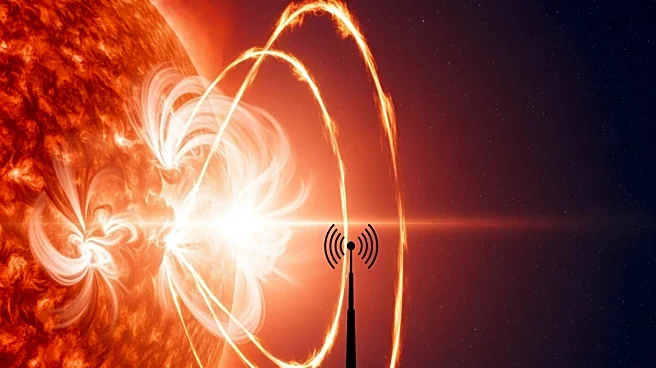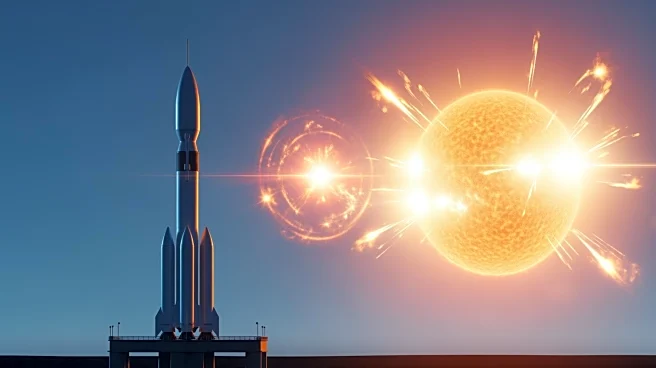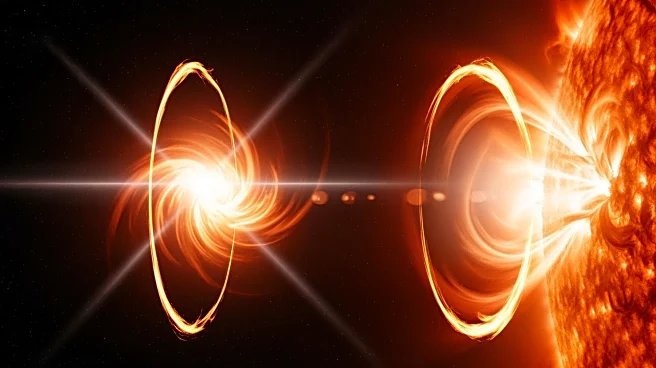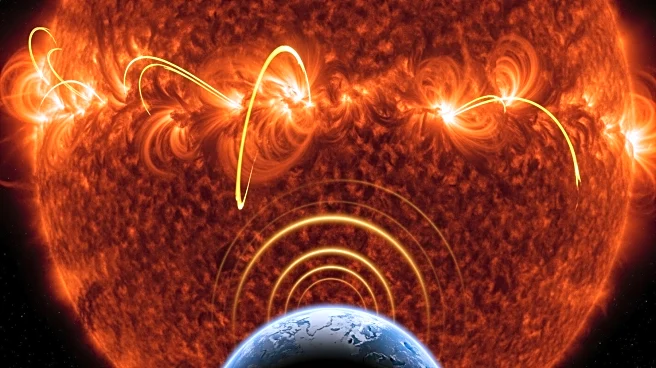What's Happening?
Astronomers have observed a giant explosion from a star outside our solar system, marking the first detection of a coronal mass ejection (CME) from another star. The star, named StKM 1-1262, is a red dwarf
located about 130 light-years from Earth. The CME was launched at a speed of 5.3 million miles per hour, a velocity seen in only a small fraction of solar CMEs. This event is significant because it could strip away the atmosphere of any nearby planet, potentially affecting its habitability. The discovery was made using the Low Frequency Array radio telescope and new analytic software, which detected a type II radio burst indicating the CME's presence.
Why It's Important?
The detection of a CME from a star beyond our solar system is crucial for understanding space weather and its effects on exoplanets. Such stellar activity can have devastating impacts on the atmospheres of planets, potentially rendering them uninhabitable. This finding opens new avenues for studying the violent activity of stars and its implications for planetary systems. It also highlights the need for further research into how these powerful bursts of energy can affect the potential for life on planets orbiting red dwarf stars, which are common in the Milky Way.
What's Next?
Researchers aim to explore how small stars generate and release such massive energy and the impact of repeated CMEs on nearby planets. The upcoming Square Kilometre Array, set to be completed in 2028, will enhance the ability to detect CMEs from other stars, providing more insights into stellar activity and its effects on exoplanets. This could lead to a better understanding of the conditions necessary for life beyond our solar system.
Beyond the Headlines
The discovery of CMEs from other stars could reshape our understanding of space weather and its role in the evolution of planetary atmospheres. It raises questions about the protective measures planets need to sustain life and the potential for finding habitable worlds in systems with active stars. This research also underscores the importance of advanced radio telescopes in uncovering hidden aspects of the universe.
